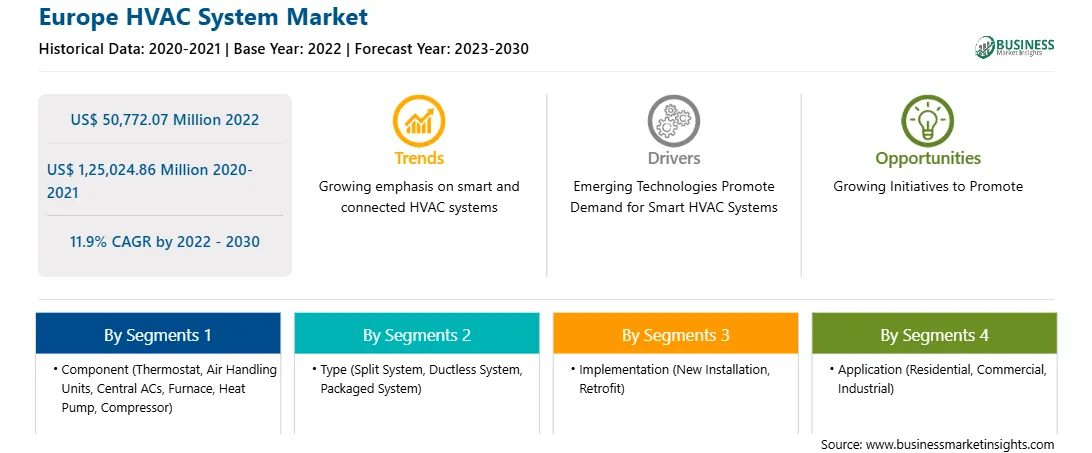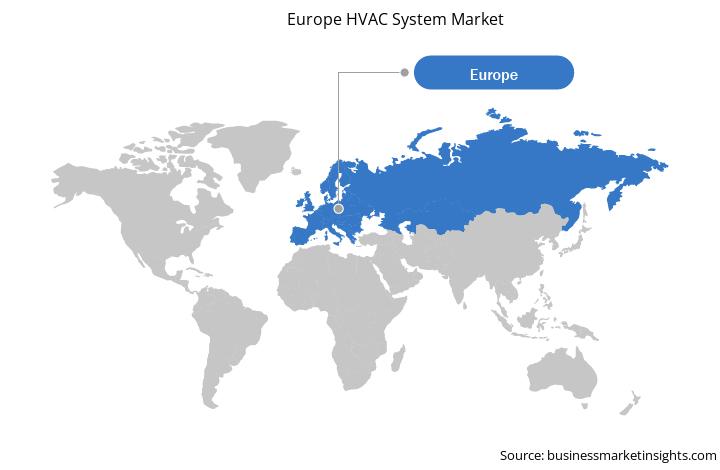Greenhouse gases are the primary sources of global warming and climate change. These gases absorb the infrared energy and re-emit it back into the space, half of which returns to the Earth as heat, consequently adding to the warmth emanating from the Earth’s surface. Small businesses and large industries emit various carbon compounds, such as carbon dioxide, because of using fossil fuels, which are known as “carbon footprint.” Since energy-efficient solutions emit fewer harmful greenhouse gas emissions into the environment, they can contribute to lowering the carbon footprint and controlling the adverse effects of global warming. To improve the quality-of-life usage of energy-efficient appliances has been growing in recent times. The reason behind the increase in energy-efficient solutions is not only because they save energy but also because they need less maintenance and have lesser replacement costs. These solutions contribute to a positive impact on the environment.
Europe consists of several developed economies, such as Germany, France, Italy, the UK, and Russia. Increasing adoption of digitalization across the European region is not only influencing different industries to maximize their capabilities but also experiencing high adoption of advanced solutions across the region. This is helping the HVAC sector to increase profitability by expanding the platforms of distribution. The demand for heating or cooling that is implemented by the HVAC systems is driven by the increasing need in industrial, commercial building spaces, or residential areas. As reported by European Commission, residential and commercial buildings, HVAC systems constitute about 35% of the total energy consumption. For energy consumption, high-efficiency heat pumps can be utilized to reduce or eliminate the use of refrigerants. Hence the demand for such alternatives to reduce GHG emissions is increasing. The increase in new residential areas, increasing average construction expenses, increasing government expenses on sustainable building development, growth in disposable income and rapid urbanization across several European economies are major factors driving the adoption of HVAC systems in Europe. The regulations formed by the governments in Europe in accordance with energy efficiency and the preference for eco-friendly refrigerants in regions such as the United Kingdom, Germany, and France.

Strategic insights for the Europe HVAC System provides data-driven analysis of the industry landscape, including current trends, key players, and regional nuances. These insights offer actionable recommendations, enabling readers to differentiate themselves from competitors by identifying untapped segments or developing unique value propositions. Leveraging data analytics, these insights help industry players anticipate the market shifts, whether investors, manufacturers, or other stakeholders. A future-oriented perspective is essential, helping stakeholders anticipate market shifts and position themselves for long-term success in this dynamic region. Ultimately, effective strategic insights empower readers to make informed decisions that drive profitability and achieve their business objectives within the market.

| Report Attribute | Details |
|---|---|
| Market size in 2022 | US$ 50,772.07 Million |
| Market Size by 2030 | US$ 1,25,024.86 Million |
| Global CAGR (2022 - 2030) | 11.9% |
| Historical Data | 2020-2021 |
| Forecast period | 2023-2030 |
| Segments Covered |
By Component
|
| Regions and Countries Covered | Europe
|
| Market leaders and key company profiles |
The geographic scope of the Europe HVAC System refers to the specific areas in which a business operates and competes. Understanding local distinctions, such as diverse consumer preferences (e.g., demand for specific plug types or battery backup durations), varying economic conditions, and regulatory environments, is crucial for tailoring strategies to specific markets. Businesses can expand their reach by identifying underserved areas or adapting their offerings to meet local demands. A clear market focus allows for more effective resource allocation, targeted marketing campaigns, and better positioning against local competitors, ultimately driving growth in those targeted areas.

Europe HVAC System Market Segmentation
The Europe HVAC system market is segmented based on component, type, implementation, application, and country. Based on component, the Europe HVAC system market is segmented into thermostat, air handling units, central ACs, furnace, heat pump, compressor, and others. The central ACs segment held the largest market share in 2022.
Based on type, the Europe HVAC system market is segmented into split system, ductless system, and packaged system. The split system segment held the largest market share in 2022.
Based on application, the Europe HVAC system market is segmented into residential, commercial, and industrial. The residential segment held the largest market share in 2022.
Based on implementation, the Europe HVAC system market is segmented into new installation and retrofit. The new installation segment held a larger market share in 2022.
Based on country, the Europe HVAC system market is segmented into Germany, France, Italy, the UK, Russia, and the Rest of Europe. Germany dominated the Europe HVAC System market in 2022.
Mitsubishi Electric Corp, Hitachi Ltd, Daikin Industries Ltd, Emerson Electric Co, Honeywell International Inc, LG Electric Inc, Carrier Global Corp, and Johnson Controls Inc are some of the leading companies operating in the Europe HVAC system market.
The Europe HVAC System Market is valued at US$ 50,772.07 Million in 2022, it is projected to reach US$ 1,25,024.86 Million by 2030.
As per our report Europe HVAC System Market, the market size is valued at US$ 50,772.07 Million in 2022, projecting it to reach US$ 1,25,024.86 Million by 2030. This translates to a CAGR of approximately 11.9% during the forecast period.
The Europe HVAC System Market report typically cover these key segments-
The historic period, base year, and forecast period can vary slightly depending on the specific market research report. However, for the Europe HVAC System Market report:
The Europe HVAC System Market is populated by several key players, each contributing to its growth and innovation. Some of the major players include:
The Europe HVAC System Market report is valuable for diverse stakeholders, including:
Essentially, anyone involved in or considering involvement in the Europe HVAC System Market value chain can benefit from the information contained in a comprehensive market report.